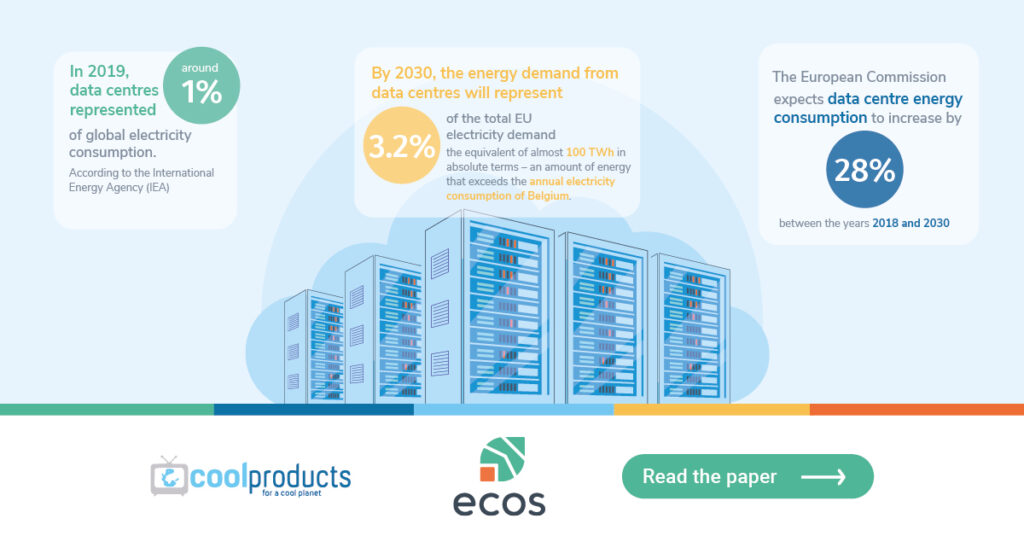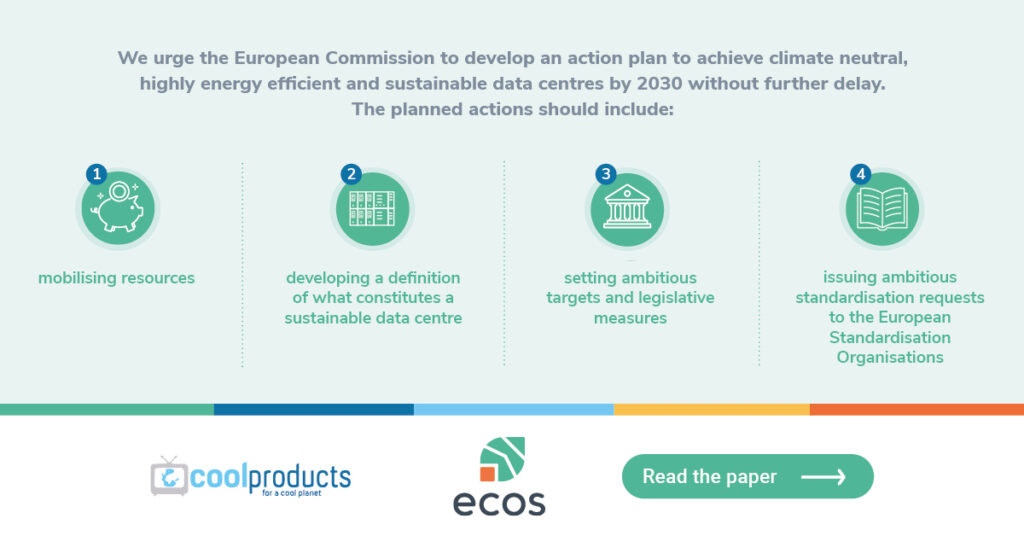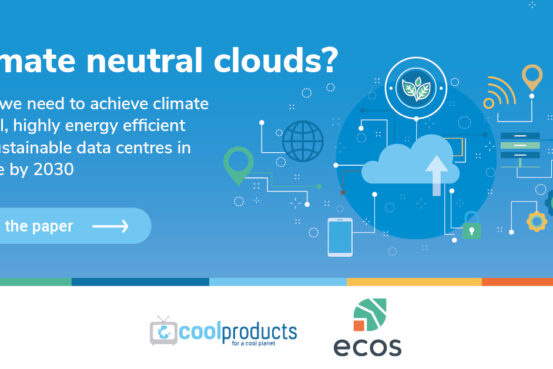ECOS and Coolproducts experts analyse the state of EU policies targeting the environmental footprint of data centres, a sector with a growing impact on our planet.
Data centres are the factories of the digital world. As digital services move into the cloud, their energy consumption moves into data centres, and their environmental impact becomes invisible to users. However, the footprint is very significant.
The European Commission aims to achieve climate neutral, highly energy efficient and sustainable data centres by 2030. However, the existing policies are underdeveloped and lack a comprehensive method for assessing energy efficiency.
Why do we need climate neutral clouds?
According to the International Energy Agency, data centres represent 1% of global electricity consumption (2019 data). Meanwhile, energy consumption from European data centres is expected to increase by 28% between the years 2018 and 2030, according to European Commission data.
In recent years, there have been significant improvements in the energy efficiency of data centre infrastructure but, simultaneously, a booming expansion of digital services continues to drive the electricity demand up. The increase in consumption has already more than offset the efficiency gains. In order to achieve climate targets, it is important to bring this rising demand under control.
Currently, the three main EU policy initiatives that aim to manage the rising energy demand from data centres are the EU Ecodesign requirements for servers, the EU data centre Code of Conduct, and EU Green Public Procurement criteria for data centres (the last two are voluntary initiatives).

Dark clouds might turn into an ugly storm for the climate
European policymakers currently lack the means to achieve climate-neutral data centres within the tight timeframe of less than 10 years.
Why? For example, a comprehensive, widely accepted method for assessing the energy efficiency of data centres is missing. The complex structure of data centres means that evaluating the full stack is a complicated exercise. Instead, the problem is often evaded by focusing only on the energy spent on some of the layers. As a result, we still lack an assessment method that is comprehensive enough to capture the performance of data centres as a whole.
Without an appropriate performance metric, it becomes impossible to monitor progress towards the target – let alone set requirements towards achieving it. In our new briefing, we highlight the shortcomings of the current metrics and provide an overview of possible solutions.
Reaching climate-neutral data centres by 2030
We urge the European Commission to develop an action plan to achieve climate-neutral, highly energy-efficient and sustainable data centres by 2030 without further delay, including:
- Mobilising resources to ensure the swift development and adoption of the energy-efficient indicator
- Developing a definition of what constitutes a sustainable data centre, so it becomes possible to evaluate whether the 2030 goal is reached
- Setting ambitious targets and legislative measures that ensure compliance with minimum requirements for data centres and transparency in energy efficiency reporting
- Issuing ambitious standardisation request to the European Standardisation Organisations in support of the policies and regulations, with the co-benefit of Europe becoming the standard-setter for data centre globally
We need to move from what is currently at best wishful thinking to taking action that ensures climate-neutral, highly energy-efficient and sustainable data centres by 2030.




